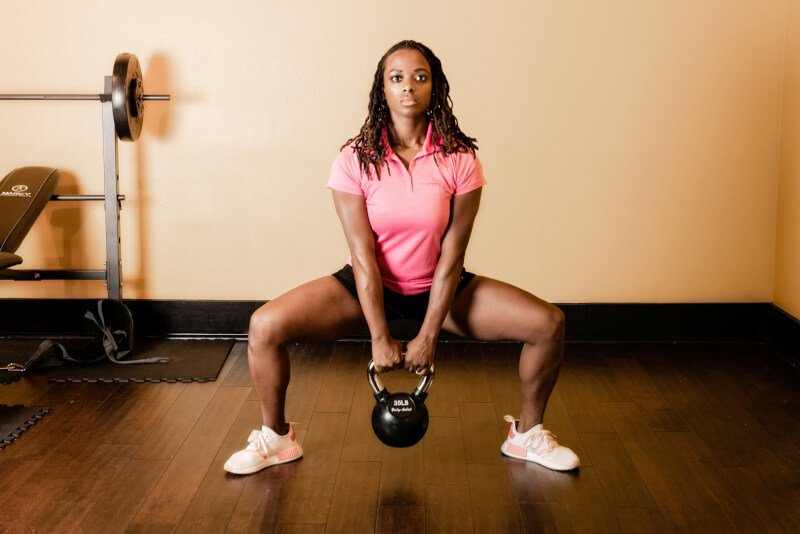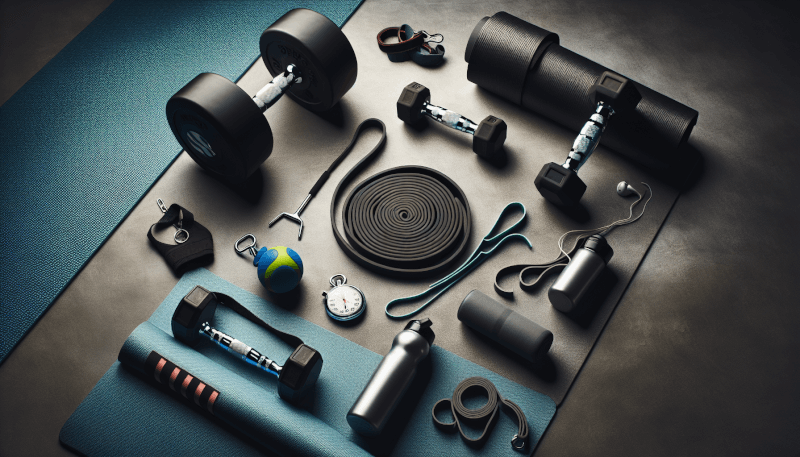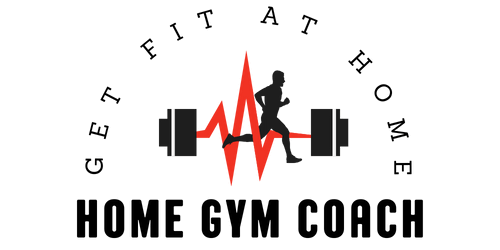Are you tired of generic fitness routines that don’t give you the results you want? If so, it’s time to delve into the realm of custom workout plans. Building a workout regimen tailored specifically for your needs can make a world of difference in achieving your fitness goals. However, designing a custom workout plan may seem overwhelming at first. That’s why we have gathered the key components to consider when creating your own personalized fitness routine. From setting goals and determining the right exercises to incorporating proper nutrition and recovery, this article will guide you through the essential elements to make your custom workout plan a success. Get ready to unlock new levels of fitness and discover a workout plan that’s uniquely yours!

Setting Goals
Identifying your objectives
When designing a custom workout plan, it’s crucial to start by identifying your objectives. What do you want to achieve through exercise? Are you aiming to lose weight, build strength, improve cardiovascular fitness, or enhance flexibility? By clarifying your objectives, you can tailor your workout plan to meet your specific needs and stay motivated throughout the process.
Defining specific and measurable goals
Once you’ve identified your objectives, it’s important to define specific and measurable goals. Rather than setting vague goals like “get healthier” or “get in shape,” strive for goals that are more specific and easy to track. For example, instead of saying you want to lose weight, set a goal to lose 10 pounds in three months. Setting clear goals helps you stay focused, gives you something to strive for, and ensures that you can assess your progress accurately.
Considering timeframes and deadlines
When designing your workout plan, consider the timeframes and deadlines for achieving your goals. Having a timeline in mind can provide structure and motivation. It’s essential to be realistic about the time it will take to reach your objectives, as setting unrealistic deadlines can lead to frustration and burnout. By planning your workouts with specific timeframes in mind, you can track your progress and adjust your approach as needed.
Assessing Fitness Level
Determining current physical condition
Before diving into any workout plan, it’s essential to determine your current physical condition. Assess your overall health, taking into account any existing medical conditions, previous injuries, or limitations. Consulting with a healthcare professional or personal trainer can provide valuable insights and ensure that you design a workout plan that is safe and suitable for your specific needs.
Evaluating strength, endurance, and flexibility
To create an effective workout plan, evaluate your current strength, endurance, and flexibility levels. This assessment will help you determine where you are starting from and highlight areas that may require more attention. By having a clear understanding of your fitness baseline, you can design a workout plan that includes exercises targeting your specific strengths and weaknesses.
Assessing cardiovascular fitness
Another crucial component to assess is your cardiovascular fitness. This involves evaluating your heart rate, endurance, and your ability to perform activities that elevate your heart rate, such as running or cycling. Understanding your cardiovascular fitness level will help you incorporate appropriate exercises into your plan that improve your heart health and endurance effectively.

Choosing the Right Exercises
Selecting exercises based on goals
Once you have established your fitness goals and assessed your fitness level, it’s time to select exercises that align with your objectives. For example, if your goal is to build strength, you may want to focus on exercises like weight lifting or resistance training. If improving cardiovascular fitness is your aim, activities such as jogging or swimming may be more suitable. Selecting exercises that directly contribute to your goals ensures that your workout plan is efficient and effective.
Incorporating a variety of movements
To keep your workouts engaging and prevent boredom, it’s important to incorporate a variety of movements in your workout plan. This could include exercises that target different muscle groups or include different types of activities, such as strength training, cardio workouts, and flexibility exercises. By incorporating variety, you not only challenge your body in different ways but also make your workouts more enjoyable.
Considering personal preferences and limitations
When designing your workout plan, take into consideration your personal preferences and any limitations you may have. If you dislike running, for example, find alternative forms of cardio exercise that you enjoy, such as dancing or cycling. Additionally, if you have any physical limitations or injuries, adjust exercises accordingly or consult with a fitness professional to find suitable modifications. By aligning your workout plan with your preferences and working within your limitations, you are more likely to stick to the plan and enjoy the process.
Creating a Balanced Routine
Incorporating different types of exercise
To ensure a well-rounded and balanced workout plan, incorporate different types of exercises. This includes exercises that target strength, cardiovascular fitness, and flexibility. Strength training exercises, such as weightlifting or bodyweight exercises, help build muscle and increase strength. Cardiovascular exercises, like jogging or cycling, improve heart health and endurance. Flexibility exercises, such as yoga or stretching, enhance joint mobility and overall flexibility. By incorporating all three types of exercise, you create a comprehensive plan that addresses various aspects of fitness.
Allocating appropriate time for each exercise
When designing your workout plan, it’s important to allocate an appropriate amount of time for each type of exercise. This ensures that you dedicate enough time and effort to each component of fitness. Depending on your goals and fitness level, you may choose to spend more time on strength training one day and prioritize cardio on another. Allocating time based on your objectives helps ensure that you give equal attention to each component of your workout routine.
Balancing strength, cardiovascular, and flexibility training
To create a well-rounded routine, it’s crucial to balance strength, cardiovascular, and flexibility training. Giving equal importance to each component of fitness helps prevent muscle imbalances and promotes overall health and well-being. While your specific goals may influence the ratio of each type of exercise in your plan, striving for balance is key. This balance can help improve overall functionality and reduce the risk of injuries.

Progression and Periodization
Gradually increasing the intensity of workouts
As you progress in your fitness journey, it’s important to gradually increase the intensity of your workouts. This principle, known as progressive overload, involves challenging your body by increasing the resistance, duration, or frequency of your exercises. By gradually increasing the intensity, you stimulate further improvements in strength, endurance, and cardiovascular fitness. However, it is crucial to progress at a pace that is manageable for your body to prevent injury and overexertion.
Implementing progressive overload
Progressive overload can be implemented in various ways, depending on your goals and preferences. For strength training, you can increase the weight you lift or the number of repetitions you perform. In cardiovascular workouts, you can increase the duration or intensity of your exercises. Flexibility training can be progressed by attempting more advanced stretches or holding poses for longer durations. The key is to challenge yourself incrementally over time, allowing your body to adapt and grow stronger.
Using periodization to vary workout intensity
Periodization is a training technique that involves planned variations in training intensity and volume over specific periods, typically weeks or months. This approach helps prevent plateaus and provides a systematic way to optimize your progress. For example, you can include periods of higher intensity followed by periods of lower intensity for recovery. By incorporating periodization into your workout plan, you can continue to make consistent progress and avoid reaching a fitness plateau.
Warm-up and Cool-down
Importance of warming up muscles and joints
Before diving into your workout, it’s essential to warm up your muscles and joints. A proper warm-up gradually increases your heart rate, increases blood flow to your muscles, and prepares your body for exercise. It helps decrease the risk of injury, improves performance, and enhances overall workout effectiveness. A warm-up can include activities such as light cardio exercises, dynamic stretches, and mobility exercises specific to the movements you will perform during your workout.
Including dynamic stretching and mobility exercises
Dynamic stretching and mobility exercises during your warm-up can further prepare your body for the upcoming workout. Dynamic stretching involves moving your muscles and joints through a full range of motion, engaging multiple muscle groups simultaneously. Mobility exercises focus on improving joint mobility and flexibility. By including these exercises in your warm-up, you increase your body’s readiness for the workout and reduce the likelihood of muscle strains or joint injuries.
Cooling down to gradually decrease heart rate and prevent injury
After completing your workout, it’s important to gradually decrease your heart rate and cool down. Cooling down allows your body to transition from an elevated metabolic state to a resting state, reducing the risk of post-workout dizziness or lightheadedness. Cool-down activities can include light cardio exercises, stretching, and deep breathing exercises. By incorporating a dedicated cool-down period, you facilitate the recovery process and help prevent muscle soreness or injury.

Scheduling and Frequency
Determining the number of workouts per week
When designing your workout plan, consider the number of workouts per week that is realistic and manageable for you. This may vary depending on your goals, fitness level, and schedule. Aim to strike a balance between challenging yourself and allowing adequate time for recovery. It’s generally recommended to have at least three to five workouts per week to see significant progress. However, the specific number may vary based on individual needs and preferences.
Designating rest days for recovery
In addition to scheduling workout days, it’s essential to designate rest days for recovery. Rest days allow your body to repair and rebuild muscles, replenish energy stores, and reduce the risk of overtraining. Ignoring rest days can lead to burnout, decreased performance, and increased risk of injury. Listen to your body and honor the rest days as an integral part of your workout plan, giving your body the time it needs to recover and adapt.
Establishing a consistent workout schedule
To ensure consistency and build a habit, it’s crucial to establish a consistent workout schedule. Consistency is key to achieving your fitness goals and maintaining progress over time. Determine the best time of day for your workouts, considering your energy levels and other commitments. By treating your workouts like any other important appointment or commitment, you are more likely to prioritize them and stick to the plan.
Proper Form and Technique
Learning correct form for each exercise
To maximize the effectiveness of your workouts and prevent injuries, it’s vital to learn the correct form for each exercise. Proper form ensures that you engage the correct muscles, target the intended areas, and minimize unnecessary strain on your joints or ligaments. When starting a new exercise, take the time to learn the proper technique through video tutorials, fitness classes, or working with a certified fitness professional. By prioritizing and practicing proper form, you set the foundation for safe and effective workouts.
Focusing on proper alignment and posture
In addition to correct form, focusing on proper alignment and posture during exercises is essential. Maintaining good alignment helps prevent injuries, ensures effective muscle engagement, and maximizes the benefits of each exercise. Pay attention to your posture, keeping your spine neutral and maintaining proper joint alignment. For exercises like squats or deadlifts, for example, maintaining a straight back and engaging your core is crucial. By focusing on alignment and posture, you promote overall body awareness and reduce the risk of injury.
Seeking guidance from fitness professionals if necessary
If you are unsure about proper form or have specific concerns, don’t hesitate to seek guidance from fitness professionals. Personal trainers or exercise specialists can provide valuable insights and help correct any form or technique issues. They can also offer personalized advice and modifications based on your unique needs or limitations. Investing in a few sessions with a qualified professional can enhance the safety and efficiency of your workouts.

Tracking Progress
Monitoring improvement in strength, endurance, and flexibility
As you follow your workout plan, it’s important to monitor and track your progress. Regularly assess your strength, endurance, and flexibility to see how they improve over time. This could involve monitoring how much weight you can lift, the number of repetitions you can perform, or the distance or speed you can run. Tracking these metrics allows you to see tangible improvements, stay motivated, and make adjustments to your workout plan when necessary.
Keeping a workout journal or using fitness apps
A workout journal or fitness app can be useful tools for tracking your progress. You can use these tools to record the exercises you perform, the weights or repetitions you complete, and any notes about how you felt during the workout. Fitness apps often provide additional features like goal setting, progress graphs, or reminders. By documenting your workouts, you create a visual representation of your progress and can easily identify areas that need attention.
Periodically reassessing goals and adjusting the plan
As you progress and achieve your goals, it’s important to periodically reassess and adjust your workout plan. Your fitness goals may evolve, or you may need to challenge yourself further to continue making progress. Regularly evaluate whether your workout plan is still aligned with your objectives and whether it is providing the desired results. If necessary, make modifications such as increasing the intensity, incorporating new exercises, or setting new goals. By adapting your plan as needed, you ensure continued progress and prevent stagnation.
Adaptation and Modification
Modifying exercises to accommodate injuries or limitations
If you have existing injuries or physical limitations, it’s essential to modify exercises to accommodate these conditions. Consult with a healthcare professional or physical therapist to determine the appropriate modifications for your specific situation. For example, if you have a knee injury, you may need to replace high-impact exercises like running with low-impact options like swimming or cycling. By adapting exercises as necessary, you can continue to work toward your goals while prioritizing your safety and well-being.
Adapting the plan as fitness level improves
As your fitness level improves, it’s important to adapt your workout plan to continue challenging your body and making progress. Gradually increase the intensity, duration, or frequency of your exercises to stimulate further improvements. For example, if you have been performing bodyweight exercises, you may progress to using resistance bands or free weights. By adapting your plan as your fitness level improves, you ensure continued growth and avoid plateauing.
Considering individual needs and preferences
Throughout the entire process of designing a custom workout plan, it’s crucial to consider your individual needs and preferences. Everyone’s fitness journey is unique, and what works for one person may not work for another. Pay attention to your likes, dislikes, and what keeps you motivated. By considering your individual needs and preferences, you can design a workout plan that is enjoyable, sustainable, and tailored to your specific goals and circumstances.
Designing a custom workout plan involves several key components, from setting clear goals and assessing your fitness level to choosing the right exercises and incorporating proper form. It’s important to create a balanced routine that addresses strength, cardiovascular fitness, and flexibility while gradually increasing the intensity through progressive overload and periodization. Additionally, incorporating warm-up and cool-down routines, scheduling and frequency, tracking progress, and adapting as your fitness level evolves are all essential elements. By following these guidelines and considering your individual needs and preferences, you can create a comprehensive workout plan that supports your goals and leads to long-term success.


